Lungwort blooms in the forests before the May lilies of the valley, so it is sometimes called a snowdrop. The beauty of the flowers is combined with the benefits, they treat various ailments. There are decorative varieties for the garden. After admiring the flowering, you can prepare a delicious salad or medicinal tea.
Material Content:
Lungwort - plant description
Lungwort is a perennial grass that belongs to the Borage family. Her stalk is low, about 30 cm, with a fluff of glandular hairs. Velvety leaves of two types - basal and stem, in some species they are covered with white specks.

Lungwort grows in forests, clearings and clearings, along forest paths. It blooms with bell-shaped small flowers collected in drooping brushes.
This plant is a good honey plant. Its leaves are used in cooking, added to soups, salads and other dishes. All parts of the Lungwort are suitable for treatment.
Variety of grass
In nature, according to various sources, there are from 20 to 70 species of Lungwort.

For medicinal purposes, 3 types are used:
- medicinal Lungwort (Pulmonaria officinalis) - pink-blue inflorescences, leaves can be pure green or with white spots;
- soft Lungwort (Pulmonaria mollis) - leaves have a velvety pubescence, due to which the species got its name, the flowers are bright blue or blue-violet;
- Lungworm obscure or dark (Pulmonaria obscura) - the most common species in Eastern Europe, the leaves are green, without spots, the flowers are lilac, white or purple.
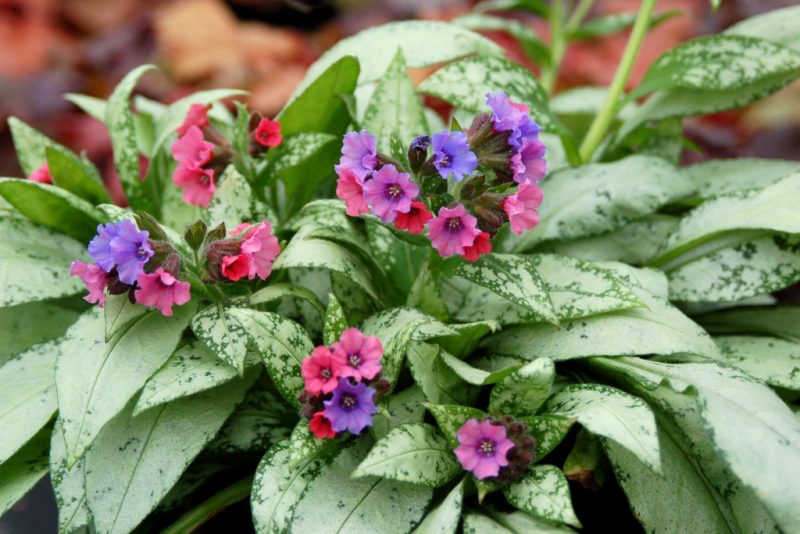
Other varieties are also popular:
- sugar (Pulmonaria saccharata) - leaves are dark green with silver spots, inflorescences are pink-blue, grows in the forests of Italy and France;
- narrow-leaved (Pulmonaria angustifolia) - flowers are bright blue or purple, the leaves are narrow, up to 3 cm wide and 30 cm long;
- red (Pulmonaria rubra) - bright red or scarlet flowers look very decorative, the leaves are narrow, light green, without spots.
In most plant species, an interesting discoloration of the corolla during flowering can be observed. Pale pink flowers turn into purple, then purple and blue. The scientific name of the plant comes from the Latin word pulmonalis, which means "pulmonary". It indicates the healing property of the herb - to treat lung diseases.
Collection and storage of plants
Lungwort blooms from April to June. At this time, they collect leaves and flowers, dried to make medicinal teas and infusions. The roots are harvested in early spring or autumn.
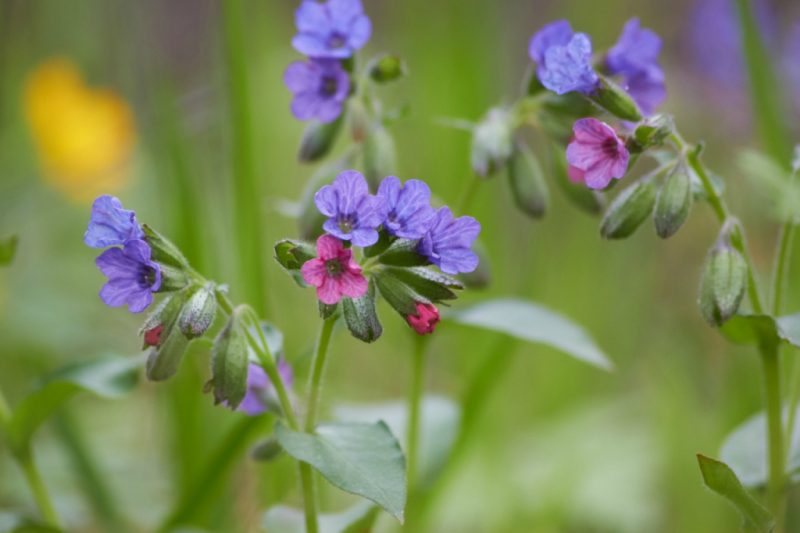
During the spring harvest, the shoots are cut off from the ground, tied into small bundles, suspended in a dark place with good ventilation. The dried plant is suitable for use for 1–2 years.
Lungwort is used fresh for preparing various salads, its leaves are edible. In winter, the plant can be salted or pickled. In England, it is specially grown in the garden, as a salad culture.
Composition and medicinal properties of the Lungwort
In European countries, Lungwort has been used to treat various viral and bacterial infections since the 11th century. It contains substances that have an expectorant and emollient effect, help with infectious diseases of the mucosa.
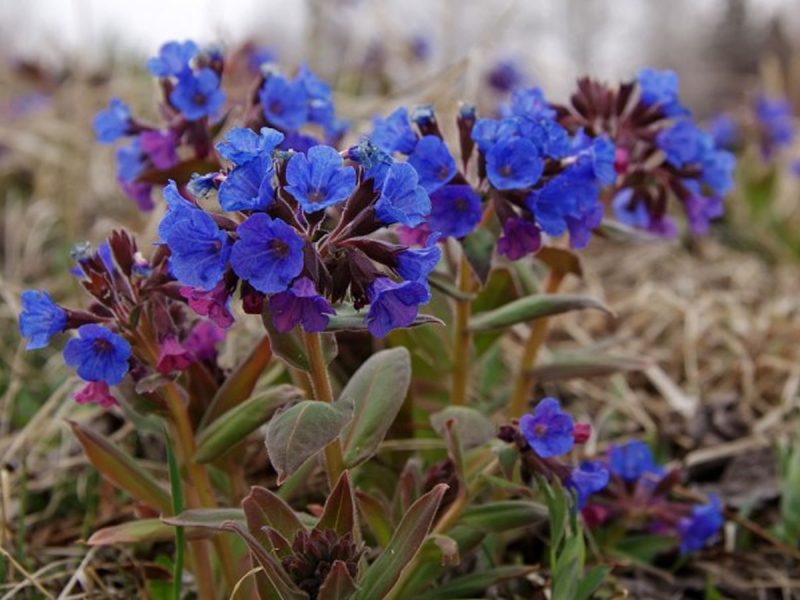
The chemical composition of the plant:
- mineral salts (iodine, iron, potassium, manganese, silicon);
- routine;
- tannins;
- mucous and tannins;
- saponins;
- carotene;
- vitamin C.
The healing properties of Lungwort are manifested due to the diverse chemical composition.
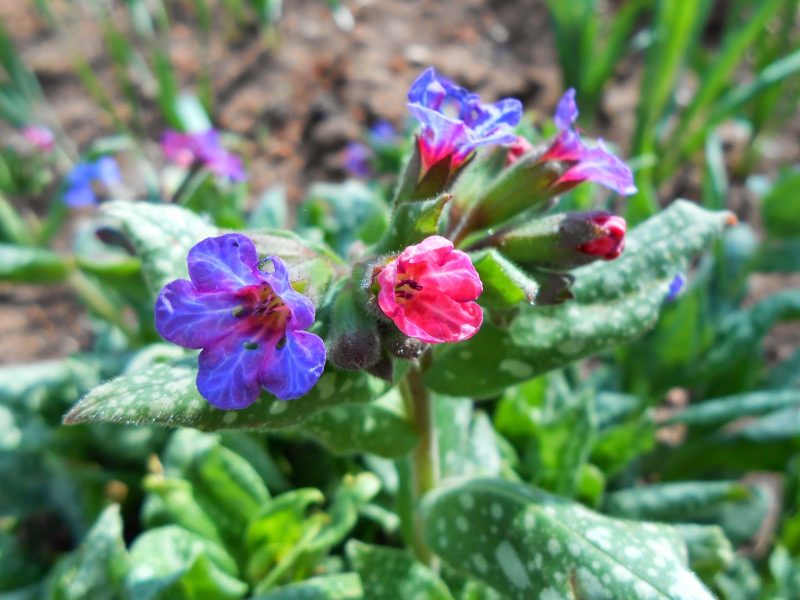
Fresh leaves, decoctions and tinctures of herbs positively affect the body:
- relieve inflammation;
- stop bleeding;
- kill pathogenic bacteria;
- help remove mucus from the bronchi;
- remove swelling;
- calm the nervous system;
- wounds heal.
In folk medicine, the use of herbs is quite common, with its help they treat diseases of various organs, make cosmetic masks for skin and hair.
Read also:medicinal properties and contraindications of dill seeds
What diseases does it help
Lungwort has long been popular in the Urals and in Western Siberia. It is especially effective in treating debilitated children who suffer from chronic lung diseases. The grass makes up for potassium deficiency, increases the protective properties of the body.
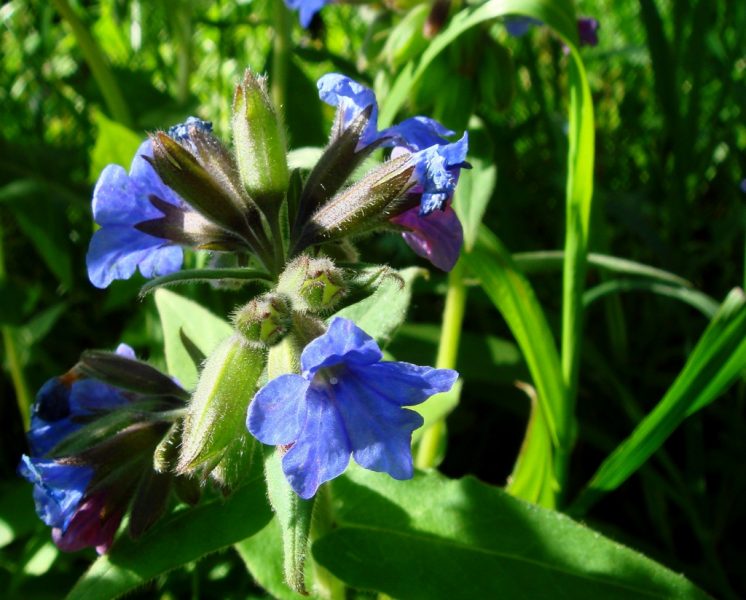
Application for which diseases helps:
- diarrhea;
- gastritis;
- anemia;
- pneumonia;
- bronchitis;
- tuberculosis;
- asthma;
- thyroid disease;
- cystitis and nephritis;
- skin diseases.
People's advice: beaver stream - from what diseases and application
Warm the decoction of Lungwort rinse your mouth with inflammation of the oral cavity and laryngitis. When taken orally, the broth acts as an expectorant and diuretic. Compresses from the infusion of herbs are used to relieve headaches.
Helps a medunica, whose medicinal properties are popularly appreciated, regain appetite, and cure gastritis with high acidity. It is useful for liver diseases, bowel movements. It treats diarrhea, as it has astringent properties.
Due to the properties of the herb to normalize the metabolism in the body, its decoction is taken for diseases of the endocrine glands. The hematopoietic effect of the plant is used to recover from bleeding, to treat anemia. Useful fresh leaves of Lungwort with vitamin deficiency, weak immunity. Juice and powder from dried leaves are used in the form of lotions and powders for purulent wounds and abscesses.
Application in traditional medicine
In folk medicine, all parts of the plant are used - flowers, leaves and roots. Decoctions and infusions are made from them fresh or harvested and dried. The plant has an expectorant and powerful antibacterial effect.
Flowers
Lungwort flowers are used to make medicinal tea and alcohol tinctures.
The recipe for the infusion, which helps with coughing:
1 tbsp. l dry flowers of Lungwort pour 200 ml of boiling water. Insist 2 hours, filter, drink 50 or 100 ml 3 times a day before meals.
Recipe for alcohol tincture:
A 0.5 L jar is filled with 1/3 of the flowers. Pour vodka to the brim. Insist 2 weeks, filter. The tincture is ready, they drink it for 1 tbsp. l 3 times a day before meals.
Lungwort Leaves
Fresh leaves of Lungwort can be used for salad, they have a neutral grassy taste, contain a lot of vitamin C.
Vitamin Salad
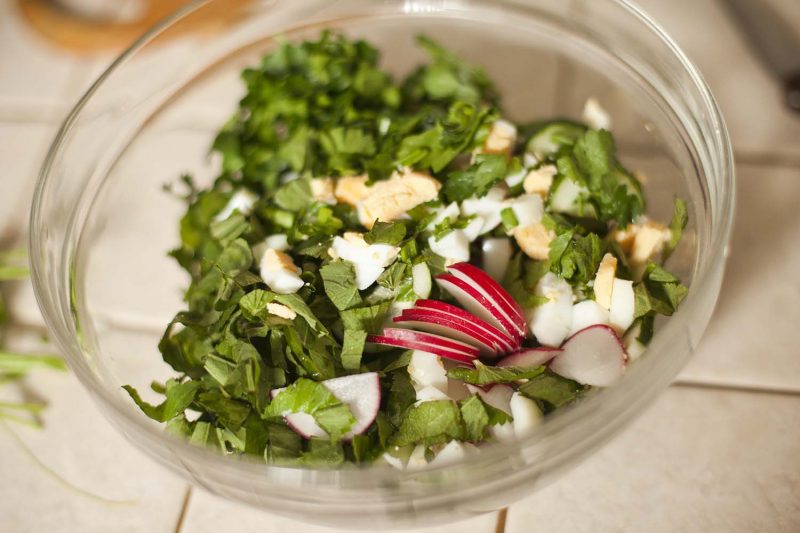
Products:
- Lungwort leaves - 1 bunch;
- egg - 1 pc.;
- green onion - 1 bunch;
- mayonnaise, salt to taste.
Cooking:
- Shredded leaves are mixed with boiled egg and green onions.
- Salt.
- Dressed with homemade mayonnaise.
Such a salad will help to cope with spring vitamin deficiency and fast fatigue.
Fresh leaves of Lungwort have a wound healing and antiseptic effect, decoctions, compresses for the treatment of skin diseases are prepared from them.
Lotions with leaves crushed into slurry are applied to the affected area of the skin, this helps stop bleeding and relieve inflammation.
Roots
Decoctions and tinctures from the root are used to treat cough, gastritis. They normalize the metabolism, act as a tonic.
Recipe for a cough broth:
1 tbsp. l chopped root pour a glass of water, bring to a boil, simmer for 1 minute. Insist, filter, and drink 50 or 100 ml 3 times a day half an hour before meals.
Decoctions from the root are also used externally for the treatment of skin diseases and hemorrhoids.
Contraindications
Lungwort is most often well perceived by the body, does not have side effects. It is undesirable to take her decoctions on an empty stomach, this can cause nausea.
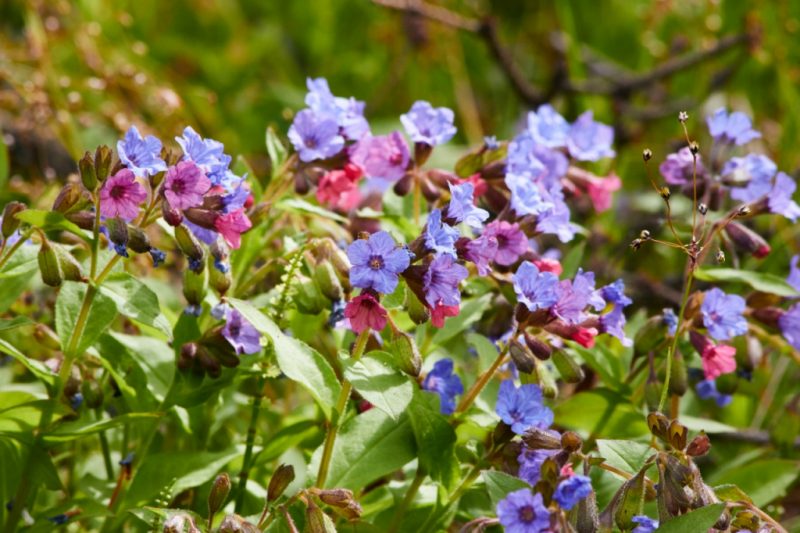
Healing herbs have contraindications for use:
- increased blood coagulation;
- constipation;
- pregnancy;
- intestinal atony;
- allergy;
- children under 3 years old.
The beneficial properties of Lungwort are much more than contraindications. It can be grown in the garden for the procurement of medicinal raw materials, and as a decorative perennial.












